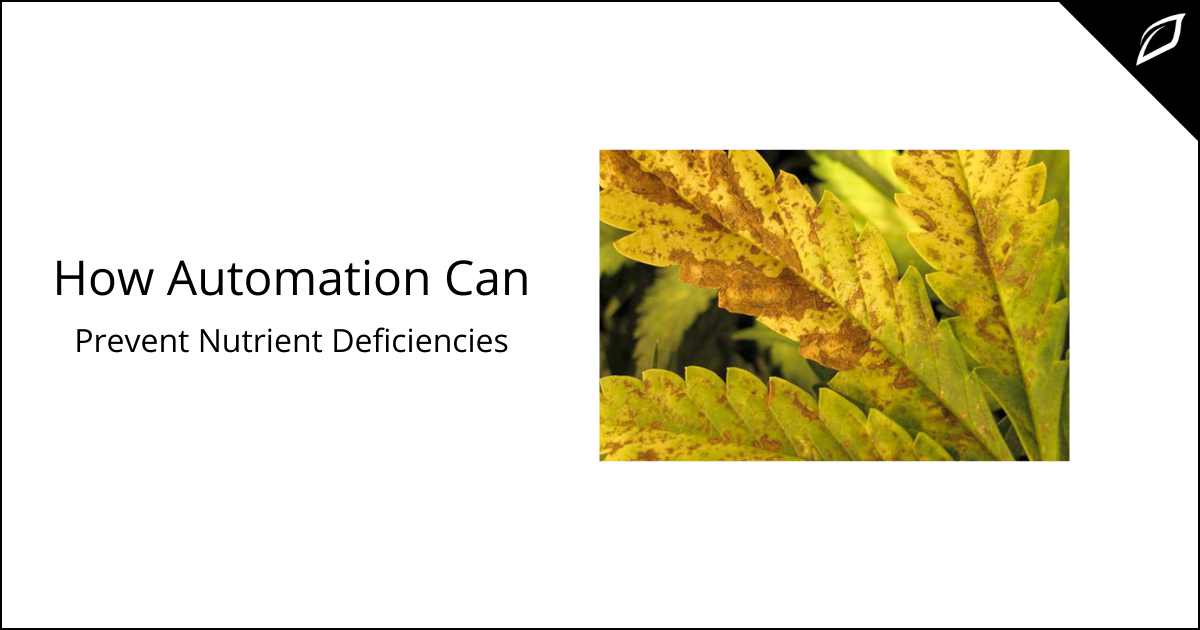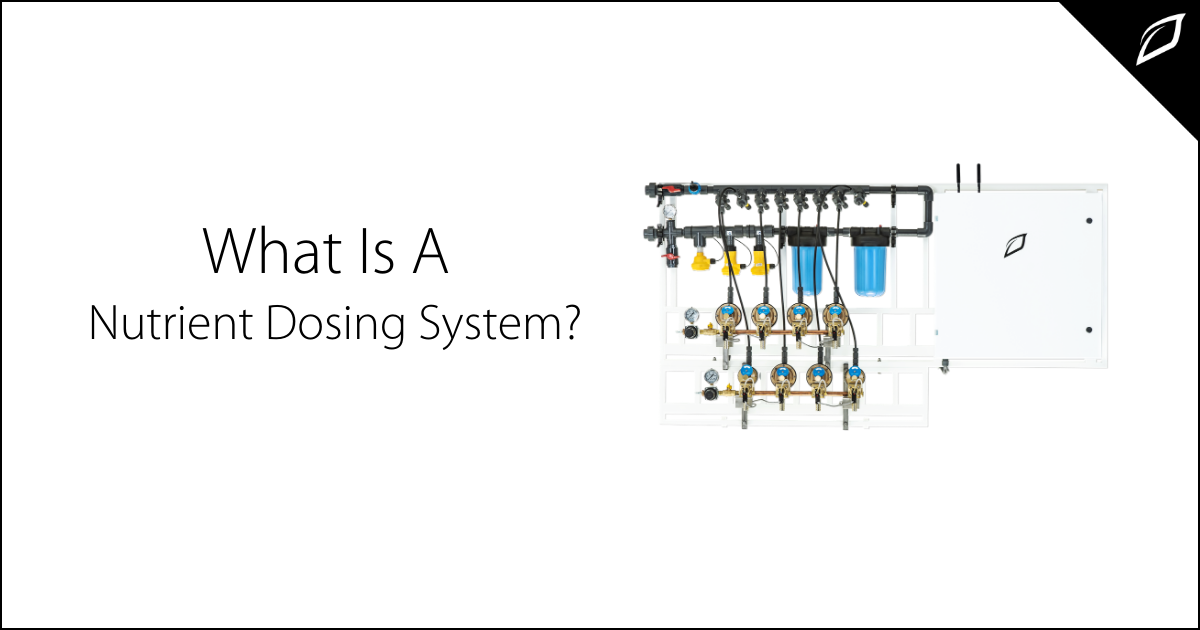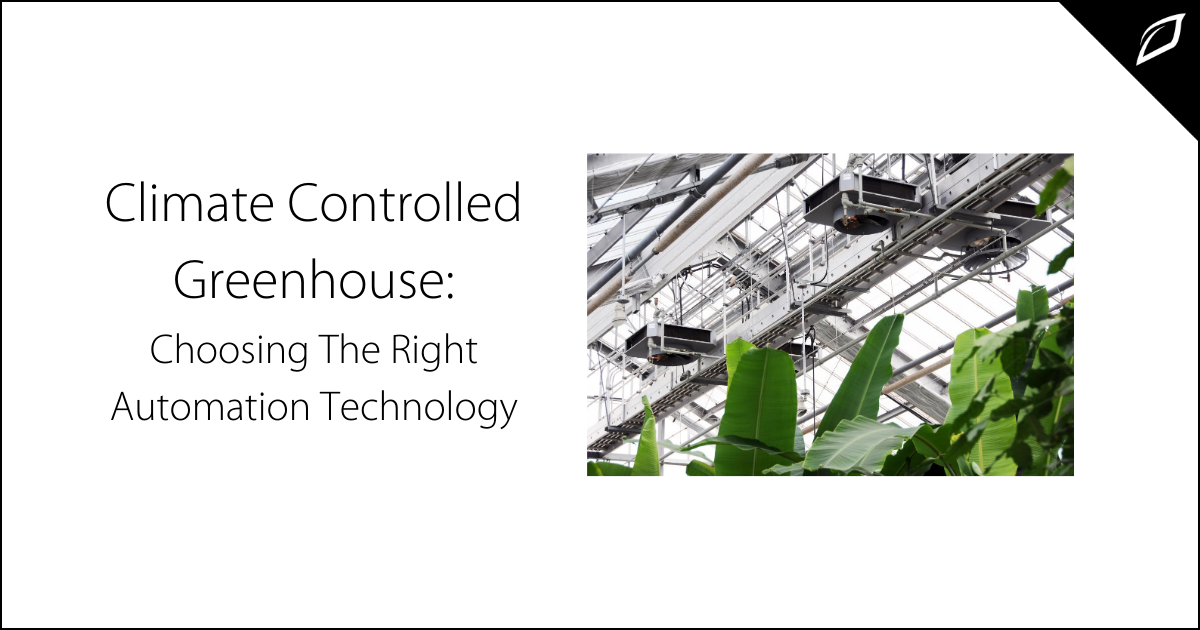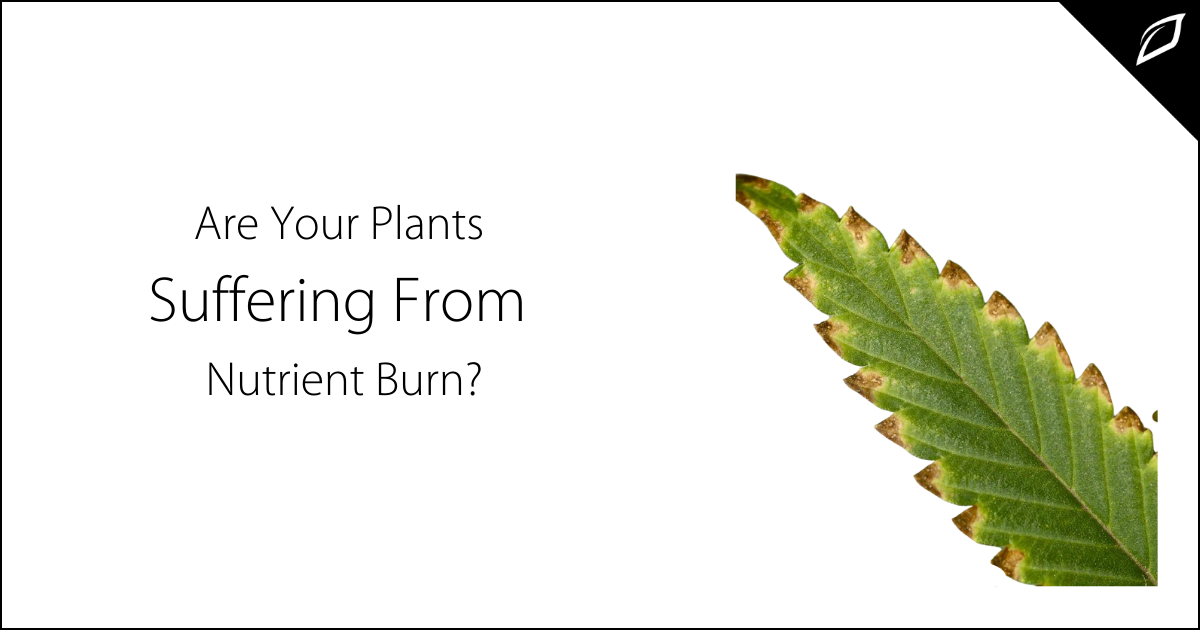What Is A Nutrient Dosing System?
Getting nutrients to crops in commercial cultivation grows is a critical aspect of a farmer's routine.
2 min read
Joy King : Jan 13, 2021 4:00:00 AM

Nutrient deficiency in plants can impact your bottom line. Delivering the right nutrients at the right time can make or break your grow operation. Let's examine how you can prevent nutrient deficiency in plants through intelligent automation.
What is Nutrient Deficiency?
Deficiencies can manifest in the form of plant discoloration, stunting, and distortion as a result of several factors, including:
Intelligent, automated nutrient dosing is the answer to inaccurate fertilizer application.
Automating Nutrient Dosing
Auto-dosing systems manage your grow operation by measuring pH, water temperature, and electrical conductivity (EC) levels while automatically adding different nutrient mixes to adjust pH and EC levels to optimum levels. Monitoring EC is vital because the amount of salts in the system correlates directly to the level of nutrients dissolved in the water.
There are a few requirements for proper nutrient dosing, including:
Types of Nutrient Dosing
There are two main dosing methods used in grow operations: dilute tanks and in-line injection. Although dilute tanks offer the simplest form of nutrient dosing, these systems are costly. Only one formulation/concentration is available at any given time unless you invest in multiple large tanks. Because fertilizers are premixed and stored in a tank until needed, if you need to adjust the formulation/concentration, you must wait until the tank needs to be refilled, wasting precious resources.
In-line injection offers more flexibility and customization and is the most popular form of nutrient delivery. These systems work by continuously "injecting" concentrated stock solutions into the water stream as irrigation takes place. Depending on the injector's design, mixing occurs downstream in the irrigation system or a mixing tank. In an automated in-line injection system, the number of nutrients delivered will vary based on flow rates and sensor feedback on EC and pH levels. One of the most significant benefits of an automated in-line injection system is that it can automatically alter the solution to adjust feed recipes, change nutrient concentration for varied crops, or alter feed strength as the day goes on.
The Benefits of Automation
Implementing a smart, automated dosing system has crucial benefits, including eliminating the need to manually assess whether your crops are getting the right nutrients at the right time. This allows you to optimize labor, and the savings add up quickly. In addition to saving on labor costs, you'll also remove human error from the equation. A few reasons you should consider a nutrient dosing system include:
Automated dosing systems are great for large and small operations, especially because smaller systems often experience greater nutrient level fluctuations than larger systems.
Final Thoughts
Not all nutrient dosing systems are created equal. You'll need to consider your specific needs so you can get the most of your fertigation system. Large commercial cultivation systems are complex and require professional installation, so work with a company that will work with you.


Getting nutrients to crops in commercial cultivation grows is a critical aspect of a farmer's routine.

Choosing the right automation technology. The modern greenhouse utilizes technology to automate many daily tasks associated with a bustling grow...

Nutrient Burn – How to Detect Overfertilization and Nip it in the Bud One common problem that many indoor growers run into is the leaves of their...